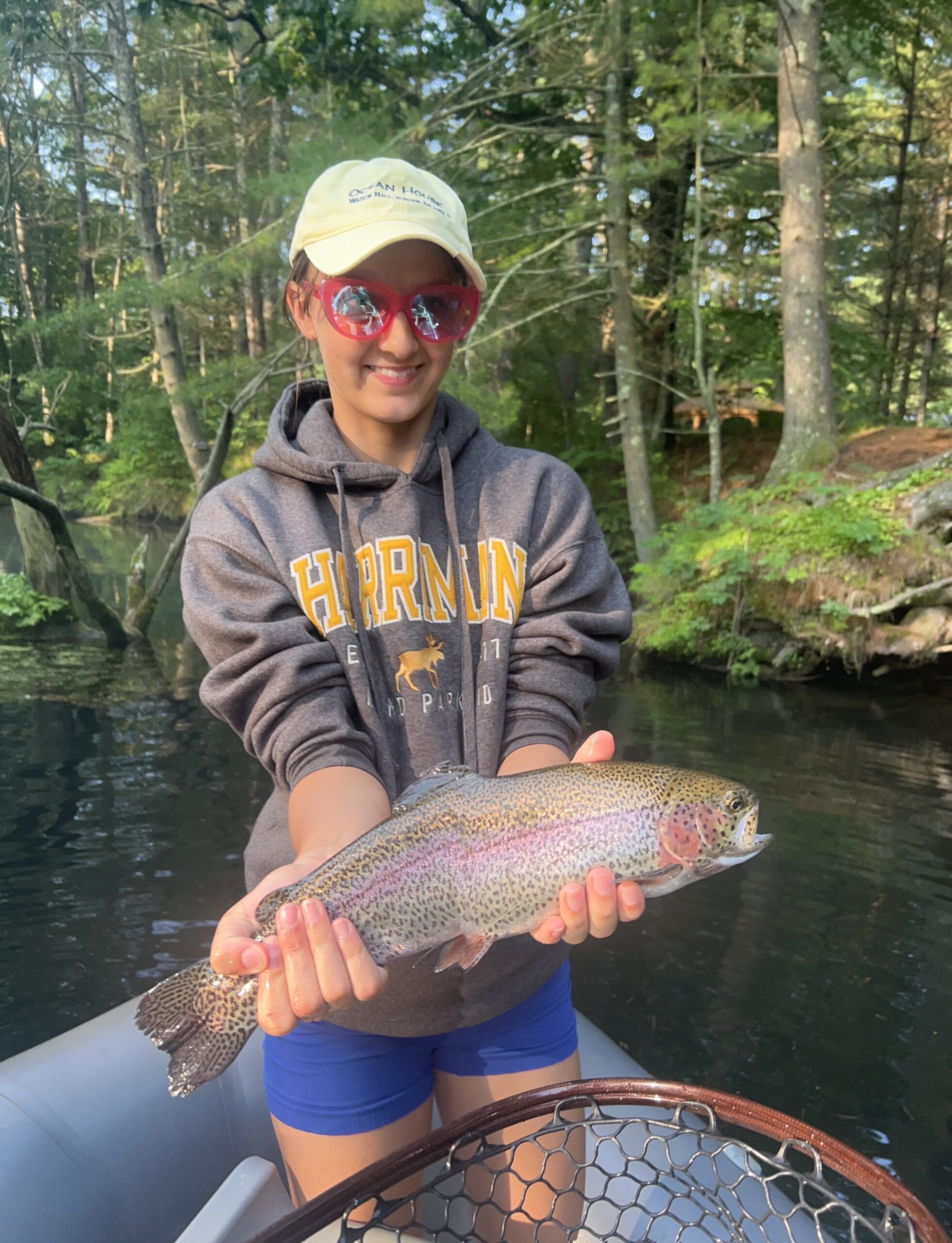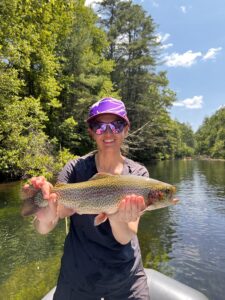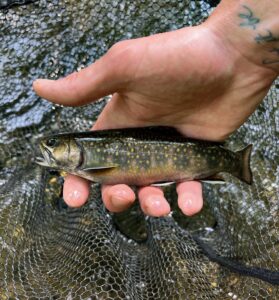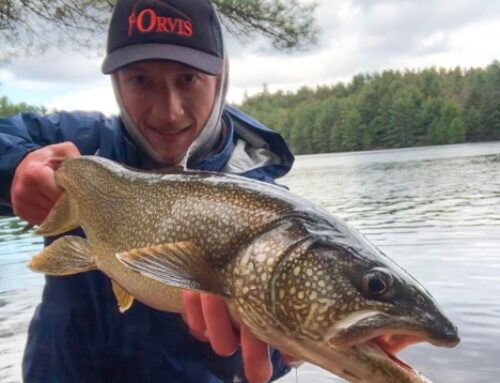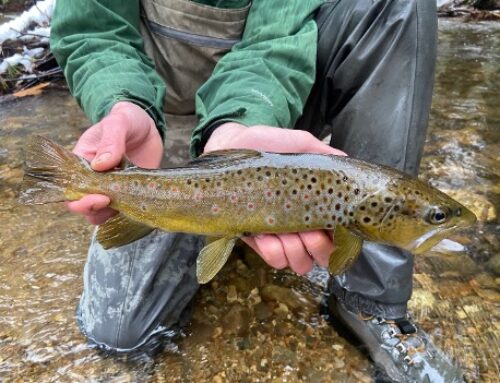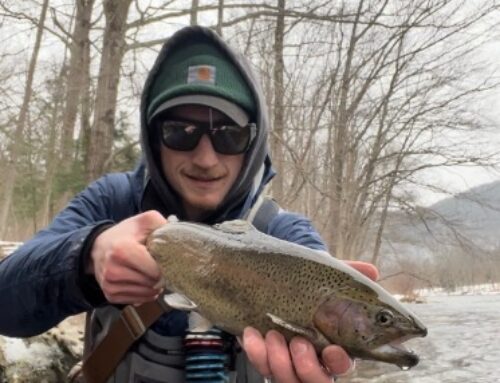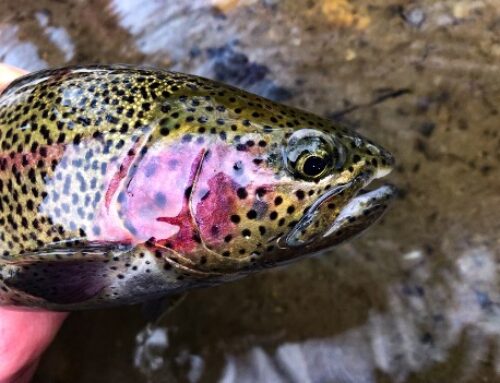We’ve gotten some rain this July! Area rivers have been running pretty high since the last report but are finally starting to recede, as long as the rain holds off!
When the rivers have been accessible, the fishing has been very good. This high water makes access tough but is good for the long term health of the fish as it provides a push of cold water through the system. August should be a good month. When the water is up but fishable, as it has been on the upper Deerfield for the past ten days or so, big hopper dropper combos with a hopper pattern or a Chubby Chernobyl as the top fly and a larger pheasant tail or prince as the dropper are working well. I will switch out the dropper until I key in on what they want: I will try caddis larvae and pupae, smaller stonefly nymphs and gilled nymphs or zug bugs. Indicator set ups with these same nymphs will also work.
The streamer bite has been solid with these higher flows. Wooly buggers get it done as do sculpin patterns and Heisenbergs.
We are partnering with Brian Gilbert of Hilltown Anglers to offer our first ever Mousing Clinic on August 19. Some of the biggest Deerfield River browns are caught on mouse patterns at night, and this clinic will help get you dialed in. More details to come! Email brian@deerfieldflyshop.com if you are interested.
We have seen some low flows for the first time in recent memory below Fife Dam in the mornings (these low flows will remain in Charlemont for several hours after they start the release at Fife). This can provide some easier wading conditions. I will downsize my offerings when the flows are low: smaller nymphs and smaller streamers. I will also prospect for surface feeders with smaller hopper patterns and beetles and ants as well. As long as we don’t get an inordinate amount of rain, these lower flows should become more prevalent and last longer through the day.
The abundant rain has made for stellar small stream brookie fishing. These little streams tend to come down quickly after a good rain and brookies are often eager to take bigger dry flies like Royal Wulffs and big elk hair caddis. Do keep an eye on the water temp on these streams–if it dips below 65 go somewhere else.
Smaller freestones like the Westfield, North and Green Rivers have benefitted from all this water and remain very fishable. The flows are high for this time of year, but are clear enough and more importantly, the higher levels have kept the temperatures down in the trout’s comfort zone. I take a similar approach as I do with high water on the Deerfield–hoppers and other terrestrials on top and pheasant tails, smaller stones, princes and caddis nymphs below. As with the small streams, keep an eye on water temps–once these hit 68 degrees or so I look elsewhere.
The Swift has remained consistent as it always. Low flows and cold water coming out of the bottom of the Quabbin. Smaller midges are generally the go to, both on top and subsurface. You can also fool some fish with small ants, beetles and hoppers this time of year.
For me, the high flows have hit the smallie fishing hardest. The lower Deerfield, Westfield, and Millers have been pretty dirty and the smallie bite has been slow. The Connecticut has been outright dangerous and it may still be a few weeks before that’s fishing again.
Largemouth fishing has been pretty solid with topwater action in the evenings and into dark.


